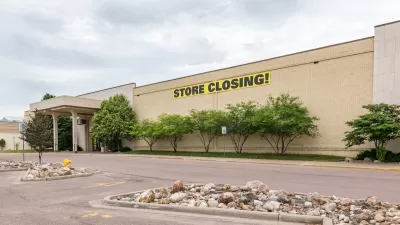The wetlands and barrier islands of Louisiana -- nature's way of absorbing tidal surges during tropical storms -- are almost gone. We may not be able to restore them.
"[The] wetlands and barrier islands that once formed the southern fringe of Louisiana have...vanished: 1,900 square miles since the 1930s, an area the size of Delaware, all gone. And it's getting worse. These days the Louisiana coast -- one of the most productive in the country -- is among the fastest-disappearing regions on Earth, dissolving into the Gulf of Mexico at the terrifying rate of 25 to 35 square miles a year.
This is extremely serious, particularly for the Cajun, French-Indian and other coastal communities that have been shrinking alongside the coast. But it is also deeply unnatural, the handiwork of all kinds of efforts to extract as much as possible from the region. The oil companies bear much of the blame since they were the ones that spent the last eight or so decades drilling and dredging the life out of the coast. But the levees and dams that tamed the Mississippi River -- and rerouted the silt that once sustained the coast -- also deserve credit. Together they have left the coast in such tattered shape that storms that might have caused minimal flooding several decades ago became surge-spewing bruisers.
[T]here are ways to patch the holes in the wetlands -- solutions like diverting rivers, and harvesting sediment and redistributing it across the ragged edges of the barrier islands and coast. But all of this requires the kind of massive, coordinated government effort -- and money -- that has yet to materialize. And unless this happens soon, unless government gets serious within the next eight or nine years, 'it will be too late,' warned [Kerry St. Pé, program director of the Barataria-Terrebonne National Estuary Program, an environmental group charged with restoring and protecting some of Louisiana's most vulnerable wetlands]. 'It's already too late for many communities.'"
FULL STORY: Can the People Who Live in Coastal Towns Ever Be Safe From Hurricanes?

Planetizen Federal Action Tracker
A weekly monitor of how Trump’s orders and actions are impacting planners and planning in America.

Congressman Proposes Bill to Rename DC Metro “Trump Train”
The Make Autorail Great Again Act would withhold federal funding to the system until the Washington Metropolitan Area Transit Authority (WMATA), rebrands as the Washington Metropolitan Authority for Greater Access (WMAGA).

The Simple Legislative Tool Transforming Vacant Downtowns
In California, Michigan and Georgia, an easy win is bringing dollars — and delight — back to city centers.

The States Losing Rural Delivery Rooms at an Alarming Pace
In some states, as few as 9% of rural hospitals still deliver babies. As a result, rising pre-term births, no adequate pre-term care and "harrowing" close calls are a growing reality.

The Small South Asian Republic Going all in on EVs
Thanks to one simple policy change less than five years ago, 65% of new cars in this Himalayan country are now electric.

DC Backpedals on Bike Lane Protection, Swaps Barriers for Paint
Citing aesthetic concerns, the city is removing the concrete barriers and flexposts that once separated Arizona Avenue cyclists from motor vehicles.
Urban Design for Planners 1: Software Tools
This six-course series explores essential urban design concepts using open source software and equips planners with the tools they need to participate fully in the urban design process.
Planning for Universal Design
Learn the tools for implementing Universal Design in planning regulations.
Smith Gee Studio
City of Charlotte
City of Camden Redevelopment Agency
City of Astoria
Transportation Research & Education Center (TREC) at Portland State University
US High Speed Rail Association
City of Camden Redevelopment Agency
Municipality of Princeton (NJ)





























